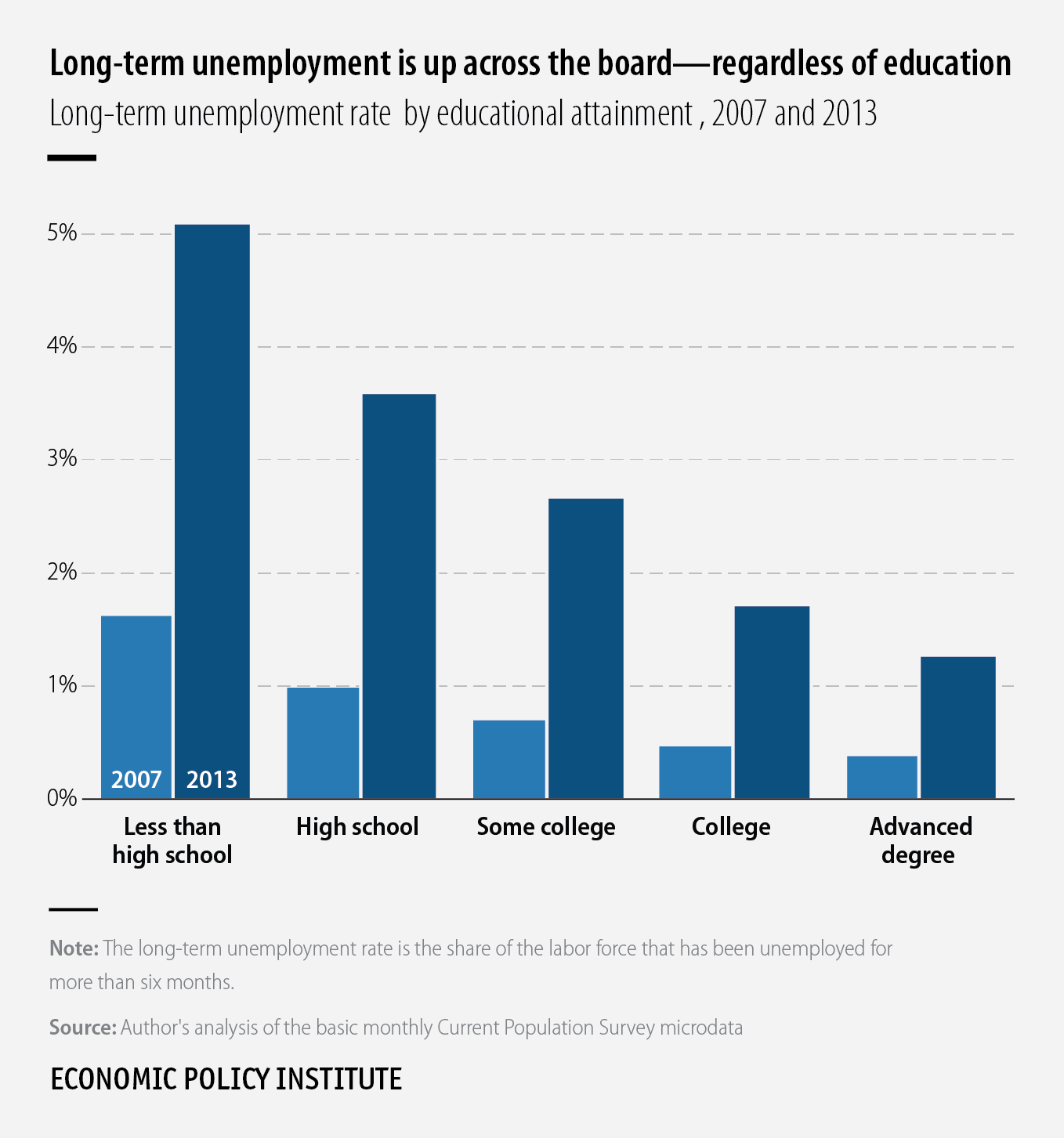Job opportunities have been so weak for so long that jobless workers continue to get stuck in unemployment for unprecedented lengths of time. Currently 3.7 million unemployed workers have been searching for a job for more than six months, more than three times the number of long-term unemployed there were in 2007, before the recession began. We often hear the claim that long-term unemployment in this recovery is due to unemployed workers not having the education or skills for the jobs that are available. A look at the data, however, shows that this is not what’s driving today’s long-term unemployment crisis.
The figure below shows there is a dramatic increase in long-term unemployment relative to before the recession started at all levels of education. While workers with higher levels of education face substantially lower long-term unemployment rates—which is always true, in good times and bad—they too have long-term unemployment rates that are more than three times as high as before the recession started. Long-term unemployment is high not because workers lack the right education or skills, but because employers have not seen demand for their goods and services pick up enough to need to significantly ramp up hiring. See this detailed analysis, which provides additional breakdowns of long-term unemployment by age, gender, race/ethnicity, occupation, and industry, and demonstrates that all groups are experiencing substantially higher long-term unemployment rates than they were before the recession started.

